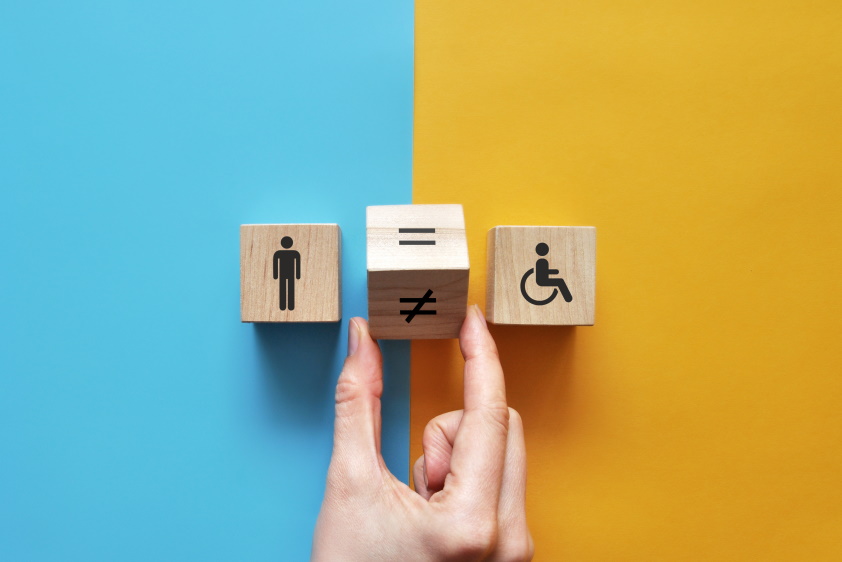Home Care Assistance Providers Can Help You Safely Navigate Your Living Spaces
After an injury, surgery, or hospitalization, you may be required to use a mobility aid to get around. But the average home isn’t designed for navigation with things like a wheelchair or walker.
Fortunately, you can prepare or modify your home to make it more accessible and comfortable for you to get around. Follow these tips – and be sure to talk to your doctor and the rest of your care team, such as your occupational therapist, about what specifically applies to you.
Navigate Your Living Space with Your Home Health Team
When you’re first transitioning to using a walker or wheelchair, it can be helpful to have someone, like your home health agency’s physical or occupational therapist, or a trusted friend or family member, to walk alongside you. This person can help you remember the right posture to use with your mobility aid and assist you in identifying safe paths to take through your home.
Practice makes perfect, as they say. Try a variety of routes through your home, such as moving from the living room to the bathroom, bedroom to kitchen, and other common paths you’ll take.
Rearrange Furniture to Create Clear Pathways
Typically, home furnishings aren’t optimally arranged when you first return home from the hospital or your surgery and require the use of a mobility aid, like a walker, scooter, cane, or wheelchair. That’s why it’s so important to rearrange furniture with intentionality.
You can proactively rearrange your furnishings before your surgery, or you can ask your loved ones to help you. Never try to rearrange heavy sofas, chairs, or cabinets without assistance, and always use proper lifting techniques. If necessary, you can even hire a local moving company to rearrange your furniture.
If you have too many furniture items in your home to create clear pathways, then you may wish to rent a storage unit or move certain pieces to the basement or into an unused room. Although your home health agency cannot help you with this, they can suggest tips for what to keep and where so that you can safely navigate.
Clear Obstructions
Now that you’ve moved furniture out of the way to create pathways, consider other types of obstructions. Do you have an area rug with an edge that likes to curl? Are there tripping hazards near your main entryway, such as a shoe rack or coat tree?
Removing minor obstructions like these can help ensure you stay upright on your walker or don’t bump into any surprises in your scooter or wheelchair. You can always put your area rugs back down when you’re more stable on your feet.
Consider Shower Stall Upgrades and Accessories
Bathing and navigating in small bathrooms can be difficult when you rely on a walker or wheelchair. Unfortunately, your medical insurance can only cover durable medical equipment, and that doesn’t include remodeling your bathroom to create an accessible shower stall.
Luckily, there are a few cost-effective ways you improve your bathroom’s accessibility.
- An extra-wide shower chair. With one set of feet outside your bathtub and the other inside it, you can carefully slide yourself over into the tub in order to bathe.
- A bathtub cut conversion kit. With this kit, your handyman – or a handy relative – can create a step-in shower stall for you, without having to fully remodel your bathroom. Although a wheelchair cannot roll into a converted bathtub, it reduces the height you’ll need to bend your knees to gain entry into your bathtub-shower combination.
- Safety bars. Installing metal safety bars in your shower can help you maintain your balance and prevent falls.
Widen Doorways As Needed
As your home care assistance team helps you navigate your home in your walker or wheelchair, you may notice that a few of your doorways simply aren’t wide enough to accommodate your mobility aids. If you don’t need to access these rooms and will only be using a wheelchair for a short while, you can move important items into a room you can more easily access.
However, if you’ll use a wheelchair for the rest of your life, widening doorways is a necessity. This ensures you can navigate your whole home.
Add Ramps or a Chairlift
If you can’t climb stairs, there are options to make your home temporarily or permanently accessible to you.
For long flights of stairs, a chairlift carries you up and down between stories of your home. You can rent a chairlift and have it installed in your home.
You may also need a ramp for shorter runs of stairs, such as to get onto your front porch or back deck. A split-level home with a few stairs leading to the bedrooms, may require either a chairlift or a ramp. Just be sure that the ramp angle is safe to navigate; if it’s too steep, you could fall.
Use a Lower Table Surface for Food Preparation
If you’re in a wheelchair, or if you need to rest on the seat of your rollator walker, then it’s likely you’ll want a lower table surface for preparing your meals. A small kitchen table can serve this purpose quite nicely.
However, if you need a permanent solution, remodeling your kitchen with lower countertops and bottom cabinets is a surefire way to help you maintain your independence.
Ask Your Home Health Agency’s Occupational Therapist for Suggestions
As you learn to navigate your home and properly use your mobility aid, get advice from the professionals. With your doctor’s orders, your home health agency can send an occupational therapist to visit you and help identify where your home may need slight modifications as you recover and heal.
Not only can an occupational therapist identify these modifications, but they also can show you how to safely navigate through narrow hallways, into your bathroom, and around your bedroom. By learning to reduce risk of falling or injury, you’ll soon be ready to walk around your home just like you could before you acquired your mobility aid.
Get Help From a Home Care Agency
One way to make living at home a little easier is with the help of a home care agency, like Phoenix Home Care & Hospice. Our nurses and therapists help to ensure you’re recovering well after a surgery, accident, or hospitalization.
Your nurse can monitor your condition, care for your wounds, teach you to change and manage your catheter, help with tube feedings, and much more. Following your patient care plan, your team will help you live with dignity as you navigate your health – and your home. We can even offer home care assistance services, such as light housekeeping, meal preparation, and more, through our private duty care offering.






